How an Astrophysicist and a Pritzker Prize Winner Contributed to the Latest International Exhibition in Milan

Scenes of galaxies and glittering stars captured by NASA’s James Webb Space Telescope wowed researchers and onlookers around the world earlier this month. They offered an unprecedented portrait of the cosmos, including the deepest and sharpest infrared image of the distant universe so far, sparking a mix of wonder and curiosity.
Just when the NASA images were published across the globe, the Triennale Milano museum in Milan was readying to generate wonder of its own with its 23rd international exhibition, one of the key events in design and architecture worldwide. The showcase represents the jewel in the crown of the Italian multidisciplinary institution, which was established in 1923 and hosts the international exhibition every three years, inviting designers, architects and artists to explore a common theme.
More from WWD
Running through Dec. 11, this edition has been evocatively dubbed “Unknown Unknowns. An Introduction to Mysteries.” As the title suggests, the showcase has more than one trait in common with NASA’s remarkable images: it aims to show visitors something they have never seen before, and a conspicuous number of artworks featured are related to space, too.
The space tie-in is natural given the unknowns beyond Earth’s boundaries, and underscores the influence of the show’s curator, Ersilia Vaudo, an astrophysicist and the chief diversity officer at the European Space Agency.
To join Vaudo, Triennale Milano’s president Stefano Boeri also tapped Burkinabè architect Francis Kéré — who was recently awarded the 2022 Pritzker Architecture Prize — as the main co-curator of the event.
The theme the trio came up with builds on the previous edition’s investigation, titled “Broken Nature: Design Takes on Human Survival.”
“The 2019 show questioned what we could have done to recover the relationship with a nature we have transfigured, destroyed and colonized, as well as how we could give back what we have taken away from it,” Boeri says.
Brainstorming about a new topic in March 2020 — at the beginning of the first lockdown in Milan — the curators realized “that the nature we thought we could save and fix also manifested in a pervasive way in our bodies, and that changed everything,” Boeri says. “So this edition originated from a reflection on…what we don’t know, and even what we don’t know that we don’t know. Think of the universe, millions of galaxies but also the bacteria in our bodies. Today, this investigation of the unknown deserves an interrogation.”
In keeping with the spirit, Boeri underscores that the exhibition doesn’t aim to “offer technical solutions nor answers but raise questions” instead.
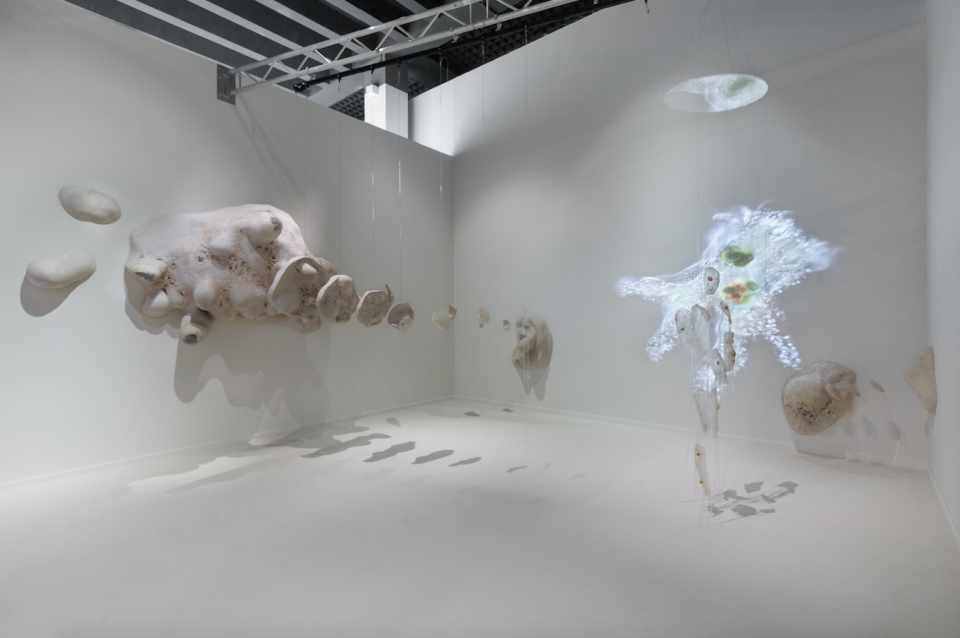
Courtesy of Triennale Milano
Developed over the course of 18 months, the international showcase takes the form of a constellation of exhibitions and projects, bringing together 400 talents from more than 40 countries and displaying more than 600 works.
“Triennale is an archipelago of spaces and this is an archipelago of exhibitions. So we worked on selecting a series of curators and then we tried to leave them maximum space so that they could express themselves,” Boeri says.
In addition to the main thematic exhibit curated by Vaudo, the show includes 23 international pavilions; four installations by Kéré; the exhibit “Mondo Reale,” curated by Herve? Chande?s, general artistic director of the Fondation Cartier pour l’art contemporain, and the show “A Tradition of the New,” curated by Marco Sammicheli, director of Triennale’s Museo del Design Italiano, which also represents Italy’s pavilion. Other special projects involved the art historians Giovanni Agosti and Jacopo Stoppa, artist Romeo Castellucci, master of architecture and design Andrea Branzi, and philosopher Emanuele Coccia, among others.
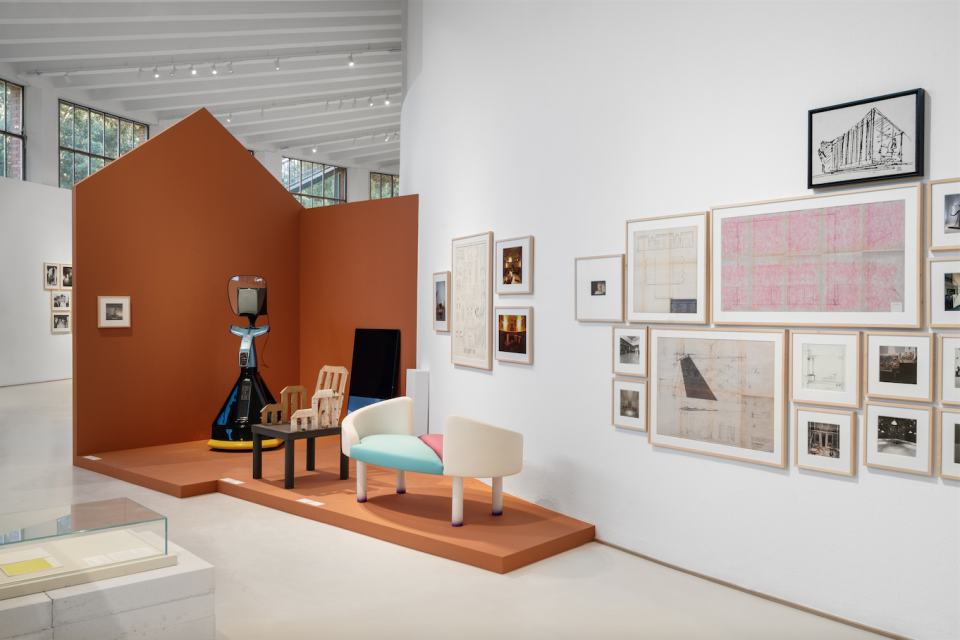
Courtesy of Triennale Milano
The epicenter of the whole project, Vaudo’s thematic showcase occupies half of the first floor of Triennale’s rationalist building to display more than 100 works hailing from different disciplines.
“We’re aware that somehow the unknown calls for a series of stereotypes and polarization — black and white, light and dark, emptiness and fullness — so it was very important not to identify it with these but, on the contrary, acknowledge that the unknown is first of all a matter of perspective,” Vaudo says. “That’s why we have this choral effort, bringing together the voices of artists but also of architects, designers and researchers: to ensure that the unknown does not become an antagonist or something distant but rather a dimension to indulge in, an opportunity for something new, an occasion for amazement and poetry.”
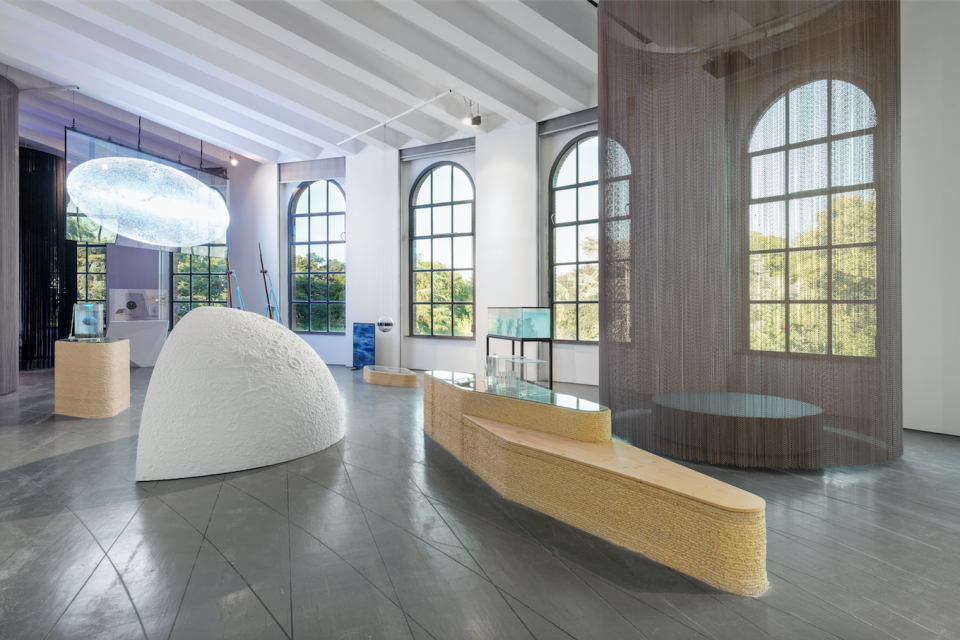
Courtesy of Triennale Milano
Hence the sense of discovery runs wild through the entire exhibit, which features disparate media and inspirations across many fields, ranging from photography to video and spanning from art to science. The myriad inputs and objects encourage visitors to take time to carefully read the description of each to fully understand their use and reason for inclusion.
The show opens with an installation Triennale commissioned to Japanese designer Yuri Suzuki that mixes visual and sound elements to “start right away with a suggestion that our five senses can be a limit in a dialogue with the unknown,” Vaudo says. Suzuki’s work is closely followed by a reproduction of Adam Elsheimer’s 1609 painting “Flight into Egypt,” the first artwork in which the Milky Way is depicted with extreme precision.
“It was the result of an attentive observation and today stands as an invitation both to take time to observe the world and as a reminder that only a century ago, we thought that the Milky Way represented the whole universe and there was nothing beyond it,” Vaudo notes.
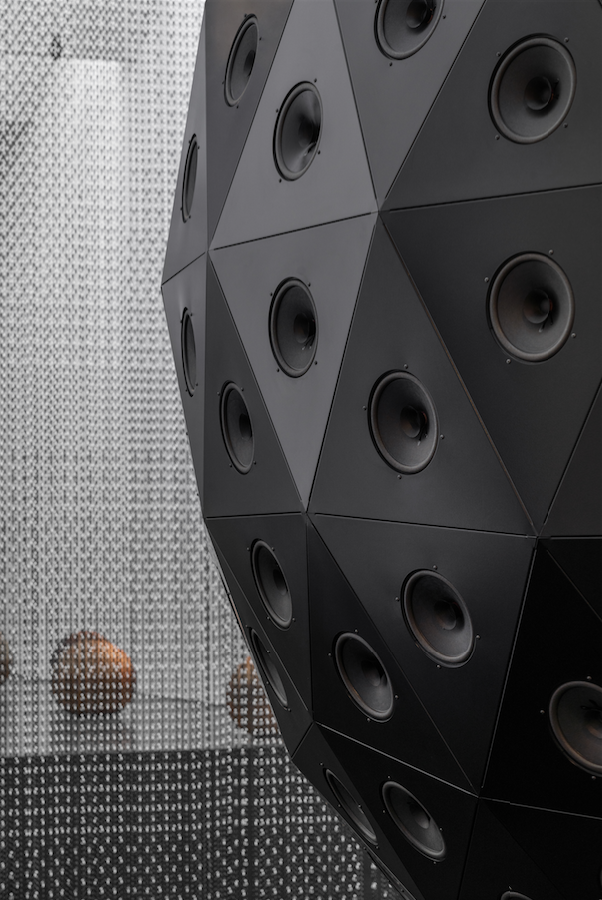
Courtesy of Triennale Milano
Progressing through the show, highlights include the exploration of gravity, presented as “the greatest designer” and artisan that shapes the universe, but also one that creates imperfect entities, as portrayed in an image of a duck-shaped comet, which stands in dialogue with Bosco Sodi’s clay sculptures “Perfect Bodies.”
Appearing to be a regular abstract artwork at first glance, Alicja Kwade’s 2020 “Selbstportr?t” represents the artist’s self-portrait through 24 small vials containing the chemical elements that make up the human anatomy.
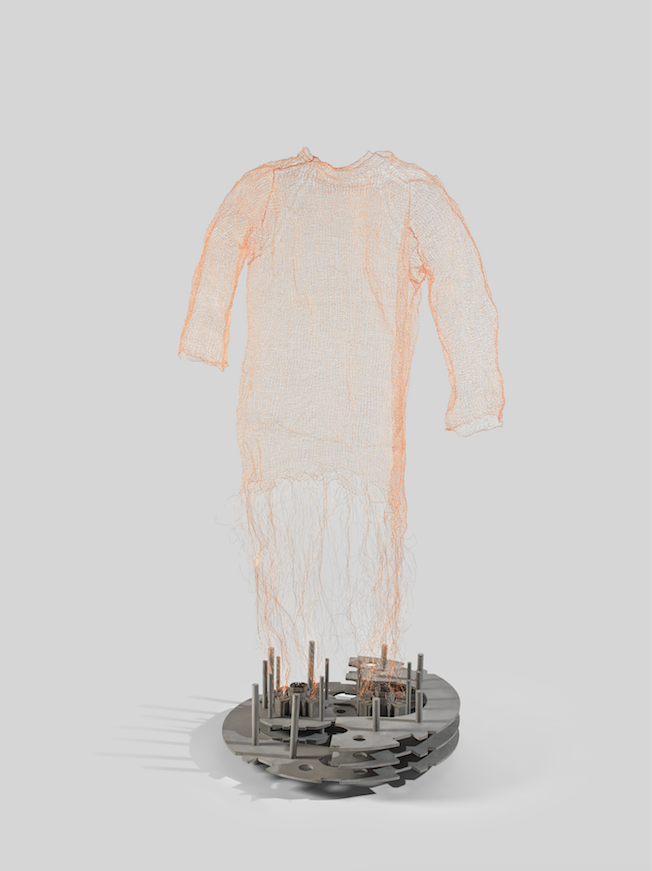
Aiste? Valiu?te? and Daumantas Plechavic?ius/Courtesy of Triennale Milano
Also demanding a closer look — and read — is the “Sonochromatic records” display of LPs by Neil Harbisson, who identifies as not entirely human and whose work invites one to consider the possibilities of cyborg technology and what it means to be human. Born with total color blindness, Harbisson decided to implant an antenna in his skull to augment his color perception. The sensory input is given to him by audible vibrations, which enable him to see sounds and the electromagnetic spectrum, perceiving ultraviolet and infrared waves. The LPs showcased are painted with different colors, which Harbisson considers the dominant ones of each song.
Other installations nod to mathematic formulas. “On many occasions math showed us realities we couldn’t even imagine. Think Einstein, who math handed a universe in expansion even when we thought it had to be stable, or [Paul] Dirac, who solved an equation and discovered antimatter and he couldn’t believe it….Math is a language of the universe we should learn to listen to better,” Vaudo says.
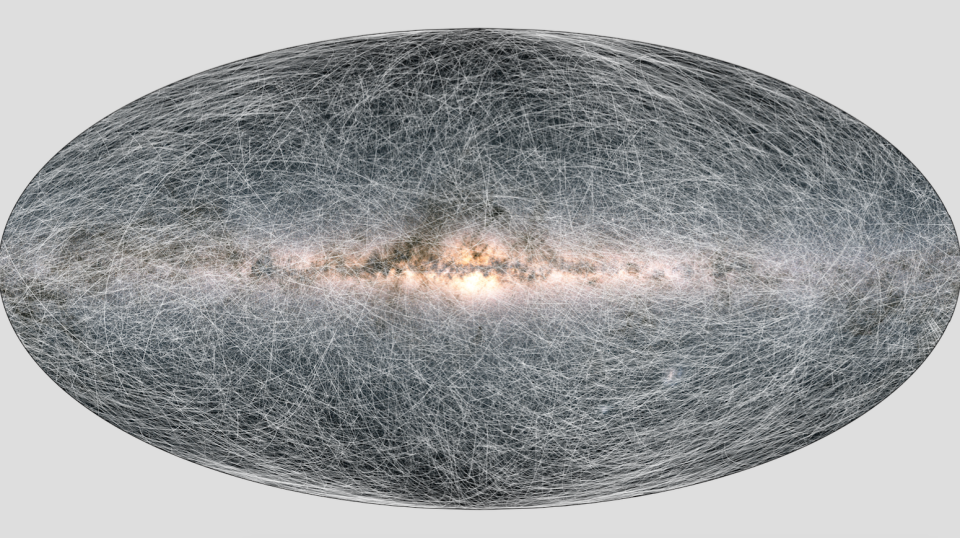
Courtesy of ESA
Time is also explored in the show, with Vaudo pointing to the European Space Agency’s Gaia space telescope and its star-mapping mission. This offered plenty of data and trajectory of stars that enable “us to know how the skies will look like for the next 1.6 million years, so the future is not necessarily a mystery,” the curator says.
The exhibit’s closing video installation, commissioned from the Turkish American artist Refik Anadol, builds on the same idea by reproducing the potential collision of the Milky Way with the Andromeda Galaxy, which is estimated to occur in about 4 billion years.
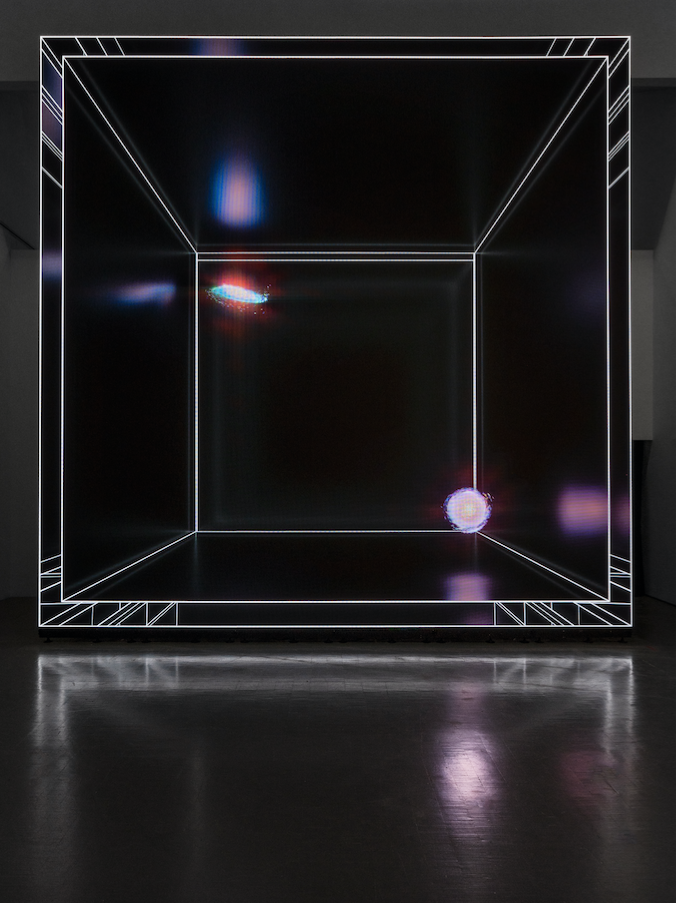
Courtesy of Triennale Milano
Also spread on Triennale’s first floor, Fondation Cartier’s “Mondo Reale” is a step into the unknown of the everyday world. The exhibition includes films, paintings, photography, installations and sculptures in a mix of new special commissions from artists like Alex Cerveny and Jessica Wynne, and artworks Fondation Cartier formerly commissioned for its shows, “Unknown Quantity” and “Mathematics: A Beautiful Elsewhere,” staged in Paris in 2002 and 2011, respectively.
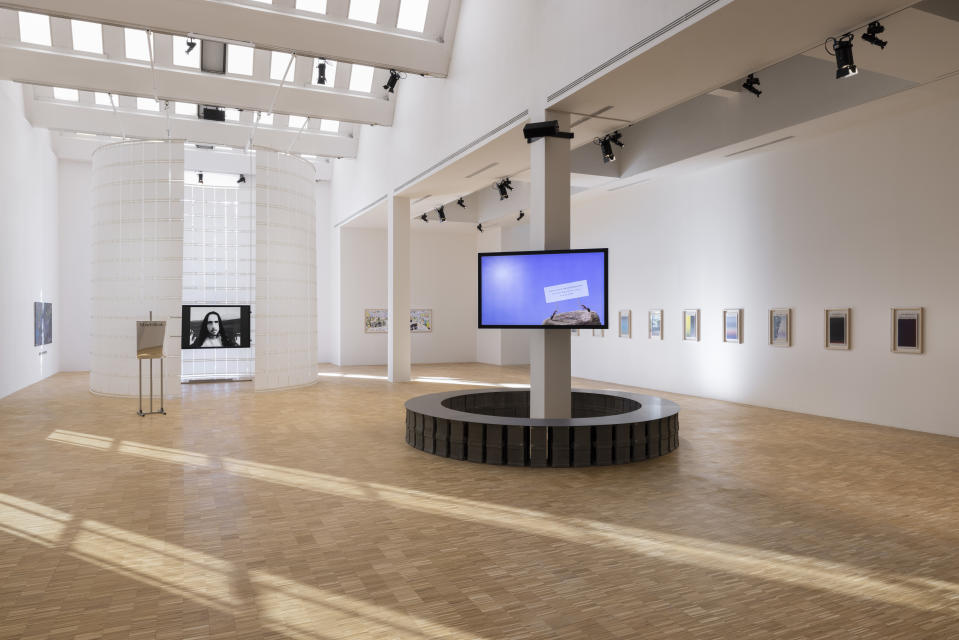
Andrea Rossetti/Courtesy of Triennale Milano
“To take part in such a vast exhibition with [an overarching] theme is a new exercise for the Fondation,” Chande?s says. “[‘Mondo Reale’] is meant to be a welcoming exhibition…each artwork is unique and intended to inspire questions that are open-ended, sparking a wish to discover even more,” adds Chandès, who tapped Formafantasma to conceive a set design where visitors can wander freely to follow their own curiosity and imagination.
The 17 artists featured in the show also include Patti Smith, Fabrice Hyber, Yann Kebbi, Virgil Ortiz, Artavazd Pelechian and Andrei Ujica, among others. Different projects by David Lynch and Sho Shibuya are additionally displayed, ranging from the former’s “Weather Report” that is broadcast daily in the exhibition at 7 p.m. CET to the latter’s daily artistic ritual shared through a screen positioned at the end of the exhibit.
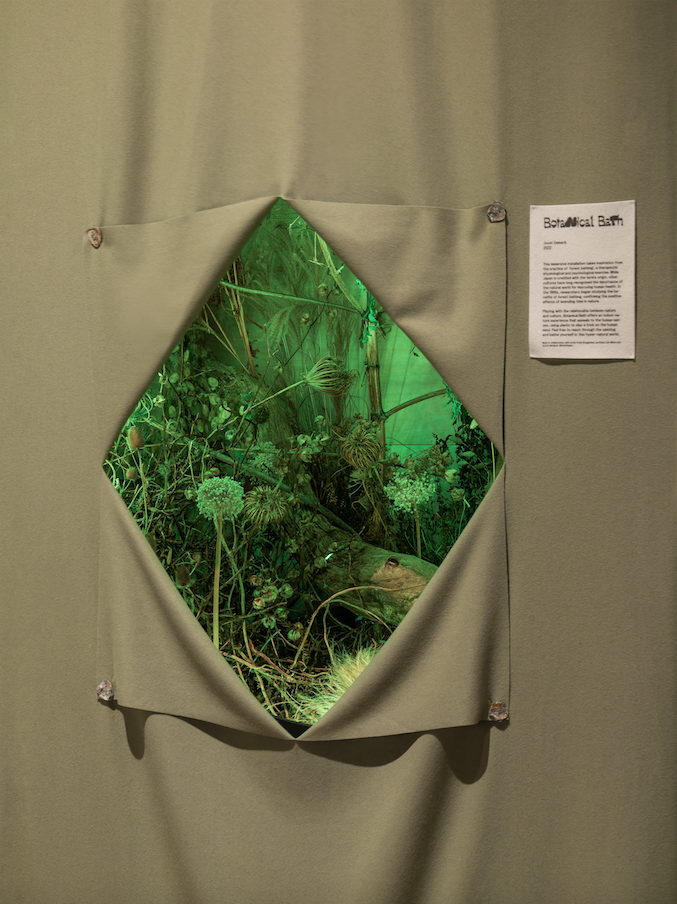
Courtesy of Triennale Milano
Triennale’s ground floor spotlights the 23 national pavilions, which include the debut of the Sinti and Rom participation, a special focus on Ukraine, and an unprecedented, strong attendance by African countries. Encouraged also by the presence of Kéré, the continent’s six participants include Burkina Faso, Ghana, Kenya, Lesotho, the Democratic Republic of Congo and Rwanda.
“If you think about all these great exhibitions around the world, this big continent with so many countries is always excluded. So first of all for [these nations] this is a great possibility to say, ‘Hey we’re not just little countries.’ We have an opportunity and great things to share with the world,” Kéré says.
The architect underscores that the African presence fits with the edition’s theme because “Africa is a huge continent, it’s the closest neighbor to Europe but sometimes if you follow the news you have a feeling we don’t know much of each other.”
In particular, Kéré developed installations for national pavilions as well as for common spaces of the museum, all sharing the goal of highlighting Africa’s skills in design and architecture as well as to “try to talk about being positive.”
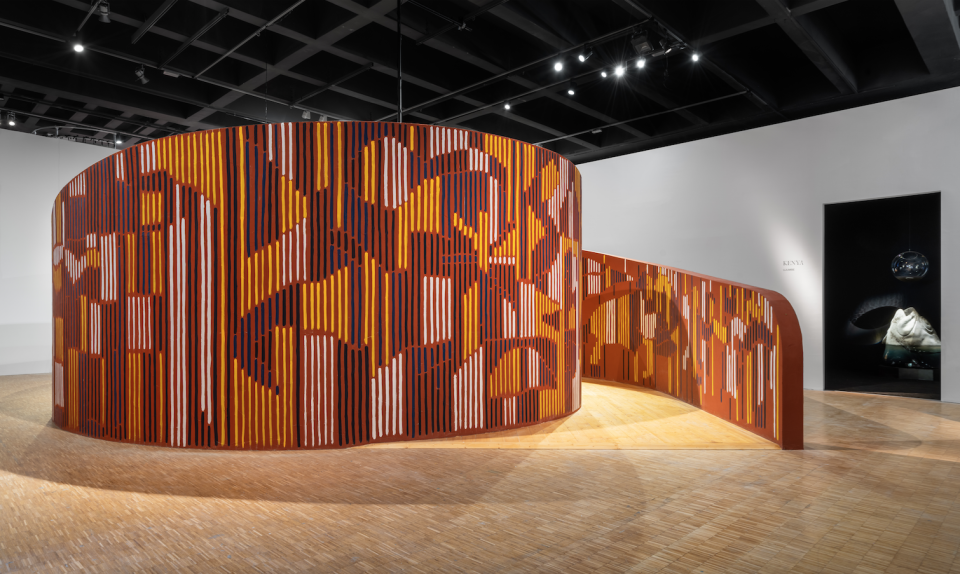
Courtesy of Triennale Milano
Commissioned by Burkina Faso, the architect developed the “Yesterday’s Tomorrow” installation and the “Drawn Together” project, consisting of a mural painting that the audience is invited to co-create to experience a tradition rooted in the country’s culture.
As part of the work for Triennale’s common areas, Kéré designed the “Under a Coffee Tree” installation with Lavazza Group, encouraging visitors “to sit and reflect on what they have seen during the exhibition and maybe even enter in dialogue with a neighbor.”
Yet his main project can be actually found outside the location, where a 40-foot high tower standing at the entrance of the museum invites “the visitor to enter and forget the burdens we have today.”
“We have climate change that is fact, [scarcity of raw] materials, very hard conflicts, population growth that is putting pressure on some countries and people are moving to find a better life….What we will do with the tower? Move the eyes up and see that between us human beings and the sky there’s space for imagination,” concludes Kéré.
Best of WWD
Sign up for WWD's Newsletter. For the latest news, follow us on Twitter, Facebook, and Instagram.